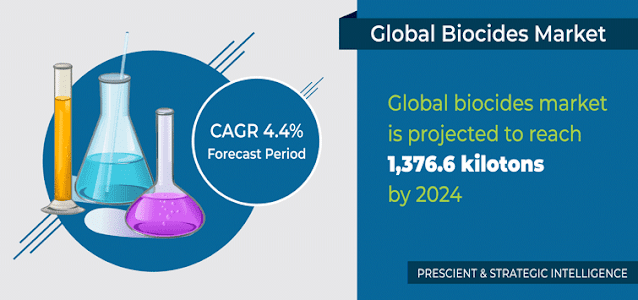Why Are Water Treatment Plants Using Biocides?
Biocidal products refer to active substances or compositions that are used to deter, render, destroy harmless microorganisms, or exert a controlling effect on hazardous organisms, by chemical or biological means. Based on their properties, such products can act as pesticides, disinfectants, or preservatives. There are two types of biocides– oxidizing and nonoxidizing. Oxidizing biocides, such as chlorine, sodium bromide, and peracetic acid, attack microorganisms by oxidizing the cell structure and disrupting nutrients by percolating through the cell walls. Whereas, nonoxidizing biocides attack microorganisms by interfering with reproduction, breaking the cell walls, or stopping the respiration process.
The increasing requirement for such products for preserving personal care, healthcare, and home care products will drive the biocides market at a 4.4% CAGR during the forecast period (2019–2024). According to P&S Intelligence, the market will produce around 1,376.6 kilotons of biocides by 2024. Biocides are used as disinfectants, sterilant, and preservatives in consumer products as they prevent or eliminate microbial growth. Thus, the burgeoning demand for consumer goods will augment the need for biocidal products in the forthcoming years.
Geographically, the Asia-Pacific biocides market is expected to witness the fastest growth during the forecast period. This will be due to the soaring demand for treated water in China, India, and several other Southeast Asian countries for residential and industrial applications. Thus, the expanding industrial sector in APAC, owing to the rapid shift of manufacturing base from developed countries to this part of the world, will fuel the demand for biocidal products in the forecast years.
Thus, the amplifying demand for treated water and rising penetration of consumer products will propel the need for biocides in the forthcoming years.

Comments